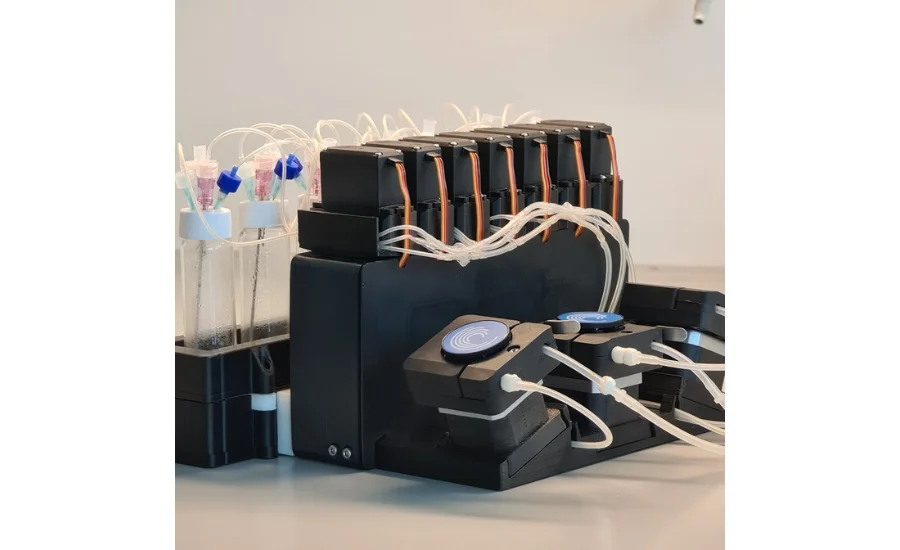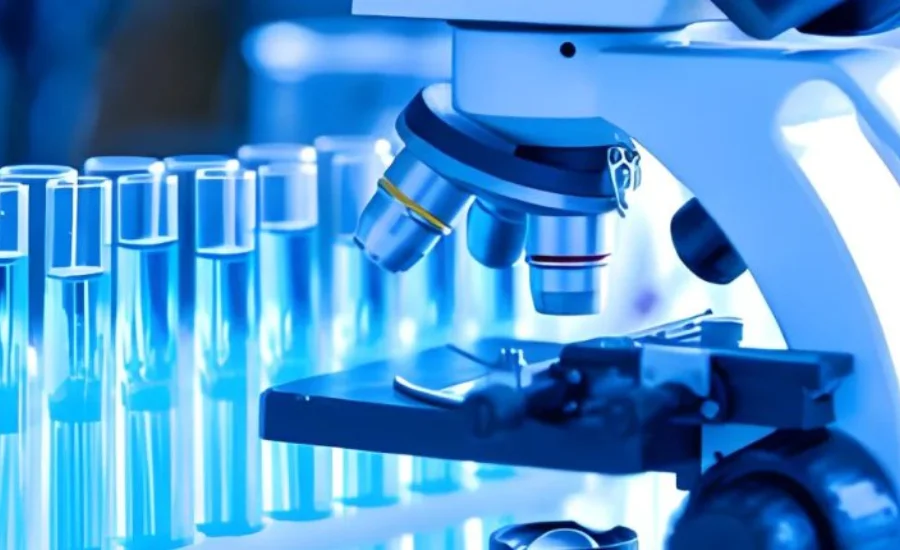In the ever-evolving realm of cancer therapy, researchers are tirelessly pursuing innovative treatments that effectively target cancer cells while safeguarding healthy tissues. The intricate nature of cancer biology and the distinct features of various tumor types necessitate the creation of drugs that not only combat the disease but also improve patients’ quality of life. One such groundbreaking compound is Catalin Austria Morbidostat, which has gained significant attention for its novel mechanism of action and potential to overcome drug resistance in cancer therapies.
Developed in Austria, Morbidostat offers a refreshing approach in the battle against cancer by focusing on the metabolic pathways of tumor cells rather than merely targeting their genetic material, a common strategy employed by many traditional treatments. This innovative method addresses a significant hurdle in oncology: the emergence of drug resistance, which often diminishes the efficacy of current therapies.
This article aims to explore the mechanisms behind Morbidostat, examining how it functions, its role in cancer treatment, and its broader implications for the future of oncology. A comprehensive understanding of this compound is essential, as it underscores the continuous advancement of cancer therapeutics and the necessity for new strategies tailored to meet patients’ needs.
As we delve into the specifics of Catalin Austria Morbidostat, we will also review its developmental history, preclinical studies, and potential clinical applications. These insights could pave the way for novel treatment protocols, ultimately providing renewed hope for individuals fighting cancer.
Understanding the Catalin Austria Morbidostat: A Revolutionary Tool in the Fight Against Antibiotic Resistance

Antibiotic resistance poses a significant threat to contemporary Healthcare as bacteria continuously adapt to resist even the most effective medications. This urgent issue underscores the necessity for innovative tools that enable researchers to investigate and address antibiotic resistance. Among these advancements is the Catalin Austria Morbidostat, an innovative device crafted to observe and regulate bacterial evolution while applying constant drug pressure in real time.
This article explores the capabilities of the Catalin Austria Morbidostat, highlighting its vital role in antibiotic resistance research and its applications within modern microbiology. By providing insights into bacterial behavior under duress, this device offers researchers a unique perspective on how resistance develops and how it can be effectively countered.
Through the utilization of the Morbidostat, scientists can not only monitor bacterial responses to antibiotics but also gain valuable data that may inform the development of new therapeutic strategies. In doing so, the Morbidostat stands as a pivotal resource in the ongoing battle against antibiotic-resistant infections, enhancing our understanding of microbial dynamics and paving the way for improved treatment methodologies.
The Role of Morbidostats in Advancing Antibiotic Resistance Research
Before diving into the specifics of the Catalin Austria Morbidostat, it is essential to grasp the broader concept of what a morbidostat is. A morbidostat is an advanced laboratory instrument designed to investigate bacterial evolution under selective pressure. By meticulously adjusting antibiotic concentrations in real time, this device maintains bacterial cultures at a precise level of stress, ensuring that the bacteria are continually challenged without being entirely eliminated.
The significance of morbidostats in antibiotic resistance research cannot be overstated. They replicate clinical scenarios where bacterial populations are exposed to varying levels of drug concentrations. This environment allows researchers to closely observe how bacteria adapt to survive these pressures and identify the genetic mutations that contribute to heightened resistance. Through such studies, morbidostats provide invaluable insights into the mechanisms behind antibiotic resistance, ultimately aiding the development of more effective treatment strategies.
Exploring the Unique Capabilities of the Morbidostat in Microbial Research
The Morbidostat stands out as an innovative instrument that facilitates the continuous cultivation of bacteria, offering distinct advantages over traditional batch culture systems. Unlike these conventional methods, which require periodic inoculation and harvesting, the Morbidostat ensures a constant supply of nutrients and efficient waste removal. This capability is crucial for examining bacterial populations that display rapid and dynamic responses to changes in their environment, such as the introduction of antibiotics.
One of the Morbidostat’s most significant features is its ability to dynamically adjust antibiotic concentrations in real time. This functionality allows researchers to create experimental conditions that closely mirror those encountered in clinical settings, yielding deeper insights into how bacteria evolve and adapt under antibiotic pressure. Moreover, the Morbidostat’s automated monitoring system enables scientists to track bacterial growth and responses without the need for continuous manual oversight, enhancing efficiency for long-term experiments. By providing a more stable and responsive research environment, the Morbidostat is an essential tool in the ongoing study of antibiotic resistance and microbial behavior.
Addressing the Challenge of Antibiotic Resistance: The Role of the Catalin Austria Morbidostat
Antibiotic resistance represents a critical hurdle in contemporary healthcare. As bacteria continue to evolve and develop strategies to evade the effects of antibiotics, the need for innovative therapeutic approaches has never been more urgent. The Catalin Austria Morbidostat offers a valuable platform for researchers to explore the complex evolutionary dynamics of antibiotic resistance in real time.
With the Morbidostat, scientists can closely monitor how bacterial populations respond to fluctuating concentrations of antibiotics over extended durations. This capability provides essential real-time data that helps researchers pinpoint the genetic mutations and biochemical pathways contributing to resistance mechanisms. The knowledge gained from these investigations can significantly impact the development of new antibiotics and alternative treatment strategies, ultimately leading to more effective therapeutic options. By advancing our understanding of bacterial adaptation, the Morbidostat is a crucial asset in the ongoing fight against antibiotic-resistant infections.
Advancing the Study of Bacterial Evolution with the Morbidostat
Historically, research on bacterial evolution has faced constraints due to the limitations of available methodologies. The advent of the Morbidostat has transformed this landscape, significantly improving our ability to observe evolution in real time. By creating a continuous culture environment, the Morbidostat facilitates the study of evolutionary processes, allowing researchers to witness firsthand how bacterial populations react to selective pressures.
This capability for real-time observation unveils crucial insights, such as the rapidity with which bacteria adapt to environmental changes. For instance, scientists can investigate how different bacterial strains compete for resources and the diverse evolutionary strategies they employ to develop antibiotic resistance. The implications of these discoveries extend beyond academic knowledge; they play a vital role in shaping public health strategies aimed at managing infectious diseases. By deepening our understanding of microbial ecology and evolution, the Morbidostat serves as a key instrument in addressing the challenges posed by bacterial infections.
Innovations in Bacterial Research: The Catalin Austria Morbidostat

The Catalin Austria Morbidostat marks a significant advancement in the realm of morbidostat technology. Designed by Austrian researchers with a focus on precision and versatility, this device is distinguished by its capability to provide highly accurate and reproducible data.
While traditional morbidostats have been instrumental in enhancing our understanding of bacterial evolution, the Catalin Austria Morbidostat incorporates several notable improvements. One of its key features is automated feedback control, which enables the device to adjust antibiotic concentrations based on real-time bacterial growth rates. This functionality ensures that the pressure on bacterial populations remains stable, facilitating more reliable observations.
Additionally, the Morbidostat allows for real-time data collection, giving researchers the opportunity to monitor bacterial responses and evolutionary changes as they occur. This capability enhances the depth of analysis regarding the development of antibiotic resistance. The device is also equipped with high-throughput functionality, enabling it to manage multiple bacterial cultures at once, which is invaluable for large-scale studies focused on bacterial evolution and drug resistance.
Furthermore, the Catalin Austria Morbidostat offers customizable settings, allowing researchers to modify antibiotic types and concentrations to simulate various clinical scenarios. This flexibility is crucial for conducting experiments that closely mimic real-world conditions, ultimately paving the way for more effective strategies in combating antibiotic resistance.
Catalin Austria Morbidostat: A Breakthrough in Cancer Treatment Strategies
The introduction of the Catalin Austria Morbidostat into cancer therapy marks a significant step forward in addressing the challenge of drug-resistant tumors. This innovative treatment approach focuses on targeting the metabolic vulnerabilities of cancer cells, potentially opening new pathways for therapies that are less susceptible to resistance. Furthermore, the possibility of combining the Morbidostat with existing chemotherapeutic agents could enhance the overall effectiveness of cancer treatment and lead to improved patient outcomes.
In summary, the Catalin Austria Morbidostat offers a promising new strategy in the fight against cancer, specifically tackling the pressing issue of drug resistance by targeting critical metabolic pathways. As ongoing clinical trials continue to explore its potential, the Morbidostat stands poised to play a pivotal role in a new generation of cancer treatments that emphasize selectivity, reduced toxicity, and increased efficacy. By advancing our understanding of how the Morbidostat operates, we can better grasp the complexities of cancer treatment and the necessity of developing innovative therapies that adapt to the changing needs of patients. The future of oncology may be significantly influenced by such groundbreaking developments, providing renewed hope for those battling this formidable disease.
Catalin Austria Morbidostat: Transforming Healthcare and Public Policy in the Fight Against Antibiotic Resistance
The research facilitated by the Catalin Austria Morbidostat has significant implications for both healthcare and public policy. With the increasing prevalence of antibiotic resistance, gaining insights into how bacteria adapt is essential for creating effective treatment protocols and infection control strategies. The comprehensive data generated from studies conducted with the Morbidostat can provide policymakers with the evidence needed to develop informed strategies aimed at combating antibiotic resistance, thereby ensuring that public health initiatives are grounded in solid scientific research.
Additionally, the insights gleaned from Morbidostat research can greatly enhance clinical practices by equipping healthcare professionals with a more profound understanding of bacterial responses to various treatments. This knowledge can pave the way for more personalized antibiotic therapies, ultimately leading to improved patient outcomes while reducing the risk of developing resistant bacterial strains. By fostering a deeper understanding of microbial behavior, the Morbidostat serves as a vital tool in the ongoing effort to address one of modern medicine’s most pressing challenges.
Read More: Burguiouse
Unlocking New Frontiers in Microbiology: The Diverse Applications of the Catalin Austria Morbidostat

The Catalin Austria Morbidostat presents numerous exciting applications, especially within the field of microbiology. While its primary focus lies in studying antibiotic resistance, this versatile device can also be leveraged for various research initiatives related to microbial evolution.
One of the most significant contributions of the Catalin Austria Morbidostat is its role in antibiotic resistance research. By exposing bacterial populations to sublethal doses of antibiotics, researchers can meticulously observe how resistance mechanisms develop over time. This approach yields invaluable insights into several critical areas:
- Genetic Mutations: Understanding the specific mutations that grant bacteria the ability to resist antibiotics.
- Survival Mechanisms: Identifying the various strategies bacteria use to withstand the pressures exerted by antimicrobial agents.
- Resistance Development Rates: Assessing how quickly different bacterial strains can develop resistance.
These insights are instrumental in informing the design of more effective antibiotic treatments and strategies aimed at curbing the emergence of resistant bacterial strains. As researchers continue to explore the capabilities of the Morbidostat, its impact on antibiotic resistance and microbial evolution will likely play a pivotal role in shaping the future of microbiological research and public health strategies.
Final Words
The Catalin Austria Morbidostat represents a groundbreaking advancement in microbiological research, particularly in the fight against antibiotic resistance. By providing a platform for real-time observation of bacterial evolution under drug pressure, it empowers researchers to uncover critical insights into the mechanisms of resistance. As scientists continue to harness the capabilities of the Morbidostat, its contributions are poised to enhance our understanding of microbial behavior and inform the development of more effective therapeutic strategies. This innovative device not only holds promise for advancing antibiotic resistance research but also serves as a vital tool in shaping future public health initiatives, ensuring that healthcare practices are grounded in robust scientific evidence. Ultimately, the Catalin Austria Morbidostat stands at the forefront of a new era in microbiology, paving the way for innovative solutions to some of the most pressing challenges in modern medicine.
For MoRE Information Check It Out Creative Insider


